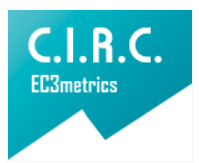Writing in Low-Income Children: Psycholinguistic Aspects
Escritura en Niños de Bajos Recursos: Aspectos psicolingüísticos
Main Article Content
In the present study the characteristics of writing was determined in children 8 to 10 years of chronological age, through the implementation of the evaluation process PROESC writers.
a methodology of qualitative approach, descriptive and cross section in which he departed from data collection and categorization of the statements made by the subject of the investigation was used.
It is sampled a population of 30 subjects of socioeconomic stratum 1 coursing from third to fifth grade and did not have a neurolinguistic pathology, or motor impairment.
The results are recorded in the characterization that there handling the phoneme conversion grapheme, decomposition of syllables, performed differentiation of the letter, syllable, word and phrase, in turn escaza flow of ideas is evident, improper handling syntactical construction and default function words.
Pedagogical practices developed in schools should establish a purpose to enable the preparation of the child for learning writing; This should be aimed toward the development of neurological, neuropsychological and psycholinguistic processes that allow adequate school performance.
Downloads
Publication Facts
Reviewer profiles N/A
Author statements
Indexed in
- Academic society
- Bogotá: Corporación Universitaria Iberoamericana
- Publisher
- Bogotá: Corporación Universitaria Iberoamericana
Article Details
Álvarez A.,Teodoro Et al. Modelo socio cognitivo, pragma lingüístico y didáctico para la producción de textos escritos. U. Complutense. Madrid, 2.007
Carrillo Gallego María Soledad y Marín Serrano Javier. Desarrollo Metafonologico y adquisición de la lectura. Un estudio de entrenamiento. Colección Investigación. Madrid 1.972
Condemarín, M. y Chadwick, M. La enseñanza de la escritura. Bases teóricas y prácticas,
Ed. Visor, Aprendizaje. Madrid 1990.
Crowder, R. G. (1982). The psichology of reading: an introduction. Oxford university press.
trad. cast. 1985, Madrid alianza.
Cuetos Vega, F. Psicología de la Escritura 8ª Ed. Wolters kluwer educación. 2009.
Cuetos, F. 2012 Neurociencia del Lenguaje Bases neurológicas e implicaciones clínicas. Editorial Médica Panamericana.
Cuervo, C y Rita, F. 2005, El regalo de la escritura, Cómo aprender a escribir, Bogotá: Universidad Nacional de Colombia.
Ferreiro, E. y Teberosky, A. 1979 Los sistemas de escritura en el desarrollo del niño, Méjico, Ed. S.XXI.
Osgood y Sebeok . Prueba de Illinois de Habilidades Psicolingüísticas. ITPA. Manual Moderno México. 1965
Peter Hlindsa y Donald A. Norman (1972) Procesamiento de información humana una introducción a la psicología editorial tecnos Madrid.
Prato, L. Abordaje de la escritura y la lectura, desde una perspectiva psicolingüística, Ediciones Novedades Educativas.
Serrano de Moreno Stella, El aprendizaje de la lectura y la escritura como construcción activa de conocimientos. AMEI Panamá, 2.000
Swank, L. K. – Phonological Awareness and the Role of Speech-Language Pathologists for Meeting Reading Goals. Lectura y Vida, 19, 3, 15-22, 1998.
Teberosky, A. Aprendiendo a escribir. ICE, Horsari. 1993
Valle Arroyo, F. Psicolingüística. Madrid. Morata, 1.991
















